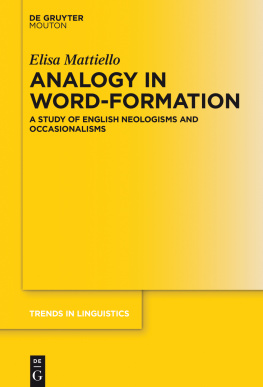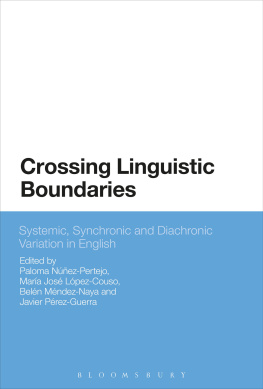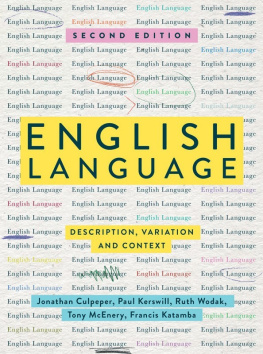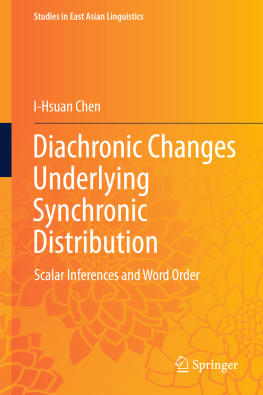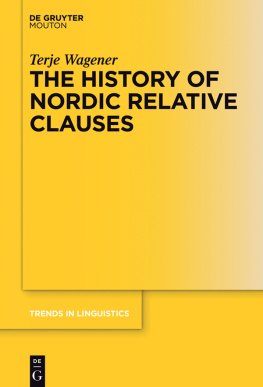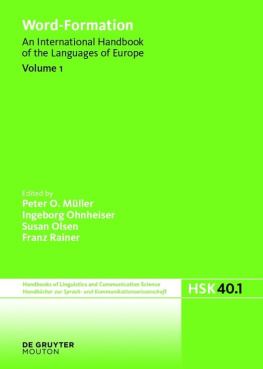Contents
Guide
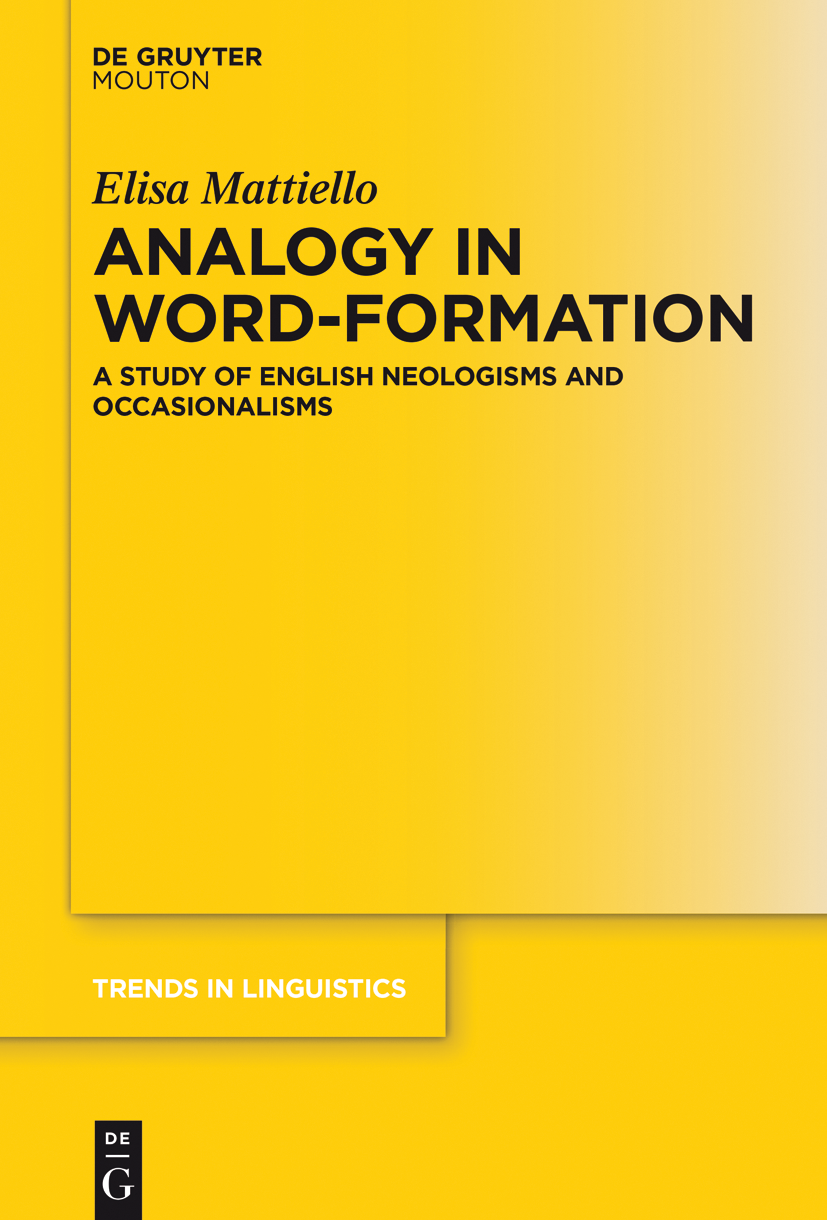
Elisa Mattiello
Analogy in Word-formation
Trends in Linguistics Studies and Monographs
Editor
Volker Gast
Editorial Board
Walter Bisang
Jan Terje Faarlund
Hans Henrich Hock
Natalia Levshina
Heiko Narrog
Matthias Schlesewsky
Amir Zeldes
Niina Ning Zhang
Editor responsible for this volume
Volker Gast
Volume 309

ISBN 978-3-11-054859-4
e-ISBN (PDF) 978-3-11-055141-9
e-ISBN (EPUB) 978-3-11-054973-7
ISSN 1861-4302
Library of Congress Cataloging-in-Publication Data
A CIP catalog record for this book has been applied for at the Library of Congress.
Bibliographic information published by the Deutsche Nationalbibliothek
The Deutsche Nationalbibliothek lists this publication in the Deutsche Nationalbibliografie; detailed bibliographic data are available on the Internet at http://dnb.dnb.de.
2017 Walter de Gruyter GmbH, Berlin/Boston
www.degruyter.com
Preface
The goal of this book is to fill a gap in lexical morphology, especially with reference to analogy in English word-formation. Hitherto, many studies have focused their interest on the role played by analogy within English inflectional morphology, chiefly as a means of extension of patterns across paradigms. However, the analogical mechanism also deserves attention and investigation in word-formation, in particular, on account of its relevance to neology in English. It is in the latter realm that this book is meant to provide in-depth qualitative analyses and stimulating quantitative findings.
The book conciliates the generative, rule-based morphological approach with the connectionist analogical approach of computational models. It discusses morphological processes that necessitate an analysis in terms of paradigmatic structure, and which therefore belong to what Bauer, Lieber, and Plag (2013) have termed paradigmatic morphology. These processes, as the three scholars admit, are so numerous in English that they cannot be dismissed as isolated exceptions in a rule-governed system. The book regards instances of such processes as paradigmatic substitutions of the variable part in analogical proportions, but also proves that some instances of analogy additionally conform to rule patterns.
The book gathers the research and results of a NetWordS (European Network on Word Structure) project on analogy in English neologisms. The project proposal was submitted in February 2014 to the European Science Foundation and accepted for a short-visit grant covering a brief stay at the University of Vienna in September of the same year. The grant gave me the opportunity to discuss the topic of my project work with the host institution research leader, Wolfgang Ulrich Dressler, as an eminent scholar in the field of morphology in general, and with other partners and experts in word-formation (especially, Franz Rainer), and in the diachronic evolution of the English language (Nikolaus Ritt). To these scholars I express my deepest gratitude, as well as to the ESF Members of the Steering Committee, whose belief in the value of this project allowed me to fulfil it.
Since my stay in Vienna, Wolfgang Dressler has become my mentor and the person who patiently read the whole manuscript and generously made detailed comments and invaluable remarks on it. During his numerous stays in Viareggio and Pisa, as well as in our exchanges via e-mail, he provided exemplary support and constant feedback on earlier drafts of the book. Learning from his experience and expertise is an honour and an enormous privilege that one cannot but hope to be offered, and I am hugely indebted to him for allowing me to be one of the privileged.
I am also extremely grateful to Marianne Kilani-Schoch and Klaus-Michael Kpcke for their precious comments both on the theoretical part and on the actual examples discussed. Their detailed remarks and bibliographical suggestions have been fundamental in refining an earlier version of my work.
I am also greatly indebted to my slang colleagues and friends, especially to Jonathon Green, who explored the whole database and offered me remarks and additional examples from his stupendous dictionary of slang, and to Julie Coleman, who suggested up-to-date sources and extensive archives to search for new English words.
Many other people contributed, to a greater and lesser extent, to the realisation of this book, offering me support, help, advice, and actual material. I warmly thank Belinda Blanche Crawford Camiciottoli, Matej Durco, Karlheinz Mrth, and Vito Pirrelli for their precious assistance on corpus linguistics tools and existing English corpora. I also owe thanks to Antonio Bertacca and Giovanni Iamartino for their feedback as lexicologists and historical linguists, especially at the earliest stages of the work. Moreover, I am immensely thankful to Pier Marco Bertinetto, Mark Aronoff, and Michele Loporcaro for their encouragement and support in the completion of this project.
I also warmly thank the statisticians of the Department of Economics and Management of the University of Pisa, especially Caterina Giusti and Monica Pratesi, for their support in preparing the tests and interpreting the results.
Thanks also go to the native English speakers who participated in the experiment, for their generous gift of help and time, and to one of them in particular, Steven David Smith, for his patient revision of the whole manuscript and suggestions for improvement.
Nor can such a project be undertaken without the resources of libraries and the assistance of their staff, especially the librarians of the ex-Department of English Studies and of the Language Centre of the University of Pisa, Anna Bonechi, Pina Deffenu, and Laura Matteoli, who have always accommodated my requests rapidly and efficiently.
In addition, the topic of this book was presented at several international conferences, whose audiences deserve thanks for their insightful observations and comments.
Finally, this book could not appear without the support and endless encouragement of Marcella Bertuccelli Papi, Paolo Maria Mancarella, Lavinia Merlini Barbaresi, Mauro Tulli, and of many colleagues and friends at the University of Pisa, to whom I wish to express my words of authentic gratitude.
It is in stressful and difficult times that some fruitful work can come out, and this work definitely had its birth in the hardest time of my life. However, my husband taught me strength in the face of adversity, and our daughter taught us how strong our trio could be. I wish to dedicate this book to them Luca and Matilde who have accompanied me in this arduous journey, helping me, day by day, not to lose determination and enthusiasm.
Pistoia, November 2015
1Introduction
1.1An overview of the term analogy in linguistics
Analogy is a very old concept in linguistics, and one that has attracted a plethora of interpretations and definitions. Originally, the Greek term ( analoga ) denoted a real mathematical proportion, which was used by Greek grammarians, from Aristophanes of Byzantium and Aristarchus of Samothrace onwards, in order to categorise morphological forms (Schironi 2007). Then analogy was introduced into Latin grammar and became a basic criterion for working out grammatical rules. Hermann Paul (18461921), the nineteenth-century Neogrammarians leading theorist, as well as the structuralist Ferdinand de Saussure (18571913) inherited the word in this sense. Interestingly, the term analogy was either kept as analogia , or translated into Latin as proportio , comparatio , secundum rationem , or even as regula . In addition, Latin grammarians adopted the Greek proportional descriptive technique, especially used for morphological inflection, according to which A : B = A : X (X = B). In other words, if one knows that the plural of shoe is shoes , one may reasonably deduce that the plural of tie is ties in line with the following analogical reasoning: shoe : shoes = tie : X (X = ties ).

